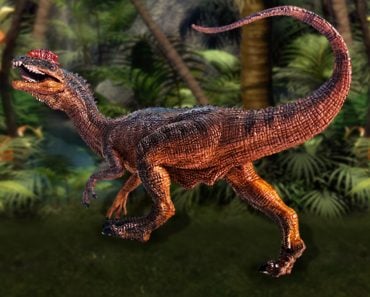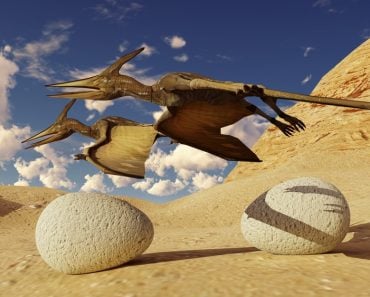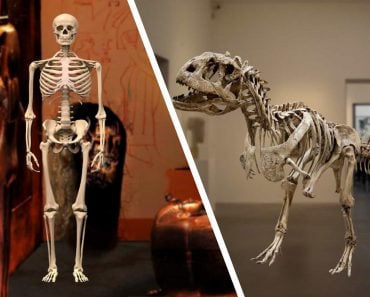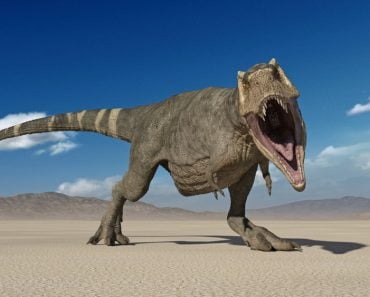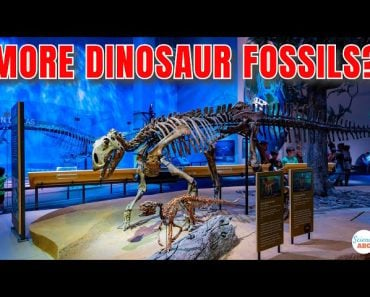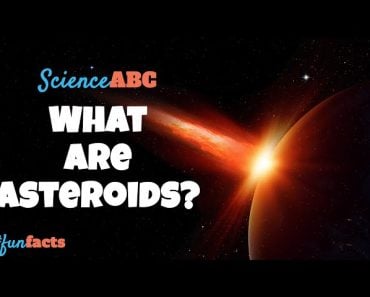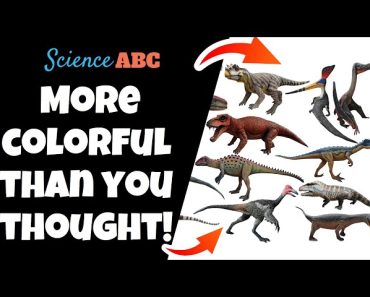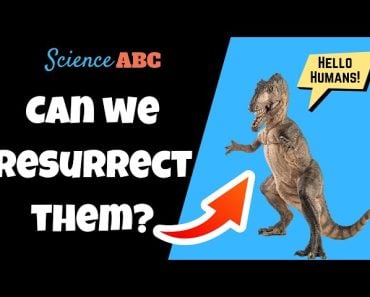Table of Contents (click to expand)
Tyrannosaurus Rex is, without a doubt, one of the coolest of all dinosaurs that ever lived. With its enormous size, speed, and killer power, it’s hard to deny that it was ferocious, fierce, and beautiful. Well, at least as long as beauty is measured in the strength to rip apart those around you. Anyway, the T. rex has gotten its fair share of attention. From starring in the Jurassic Park movies and being the most talked-about dinosaur to entertaining everyone when their Internet doesn’t work, the T. rex is part of our shared culture.
Unfortunately, the absolute superiority of the T. rex must now be questioned. The Giganotosaurus, a massive dinosaur that existed 30 million years before the T. rex, seems to be a worthy rival. Although these two dinosaurs would have never interacted with each other, it leaves one to wonder what would have happened if they had lived simultaneously.
I’d hate to take the crown from the king of dinosaurs and hand it over to the Giganotosaurus, so here’s an analysis to see who the more capable predator was.
Recommended Video for you:
Size
The sizes of dinosaurs are up for debate. They existed so long ago that we must find their sizes by piecing together their fossils. We can also use mathematical models to guess what size they could have been. Using those models, we can predict that the Giganotosaurus may have been 13 meters long and would have weighed almost 14 tons.
It was long believed that the largest T. rex fossil was about 12 meters long and weighed about nine and a half tons. This beloved fossil was named SUE and would have been smaller than a Giganotosaurus. However, a newer T. rex named SCOTTY is as big as Giganotosaurus but weighs slightly less.
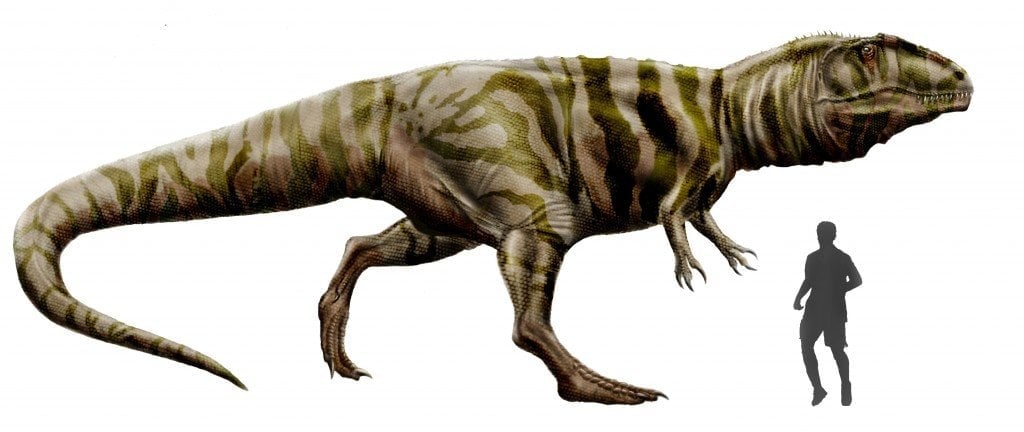
This loss of weight could be attributed to an increase in global temperatures. This makes the lighter weight a fitter adaptation. So, for this round, I think it’s better to call it a draw.
T. Rex 0 – Giganotosaurus 0
Speed
While speed may not be the most important thing for dinosaurs as big as these, it is something to watch out for when it comes to being a big predator.
The speed of a dinosaur is estimated by reconstructing its muscle structure and density, using the length of its limbs and the estimated center of mass. Comparing the distance between two consecutive footprints (in a sequence of preserved footprints) and the size of each footprint is another method used to estimate the movement speeds of ancient dinosaurs.
The maximum speed of a T. rex has been controversial for many years; some scientists estimate the maximum speed to be 27.72Km/hr ( 7.7m/s). Other estimates state that the T. rex needed to run as fast as 60km/hr(17m/s) to capture its prey. These studies predicted it might even reach speeds of 104km/hr.
On the other hand, the Giganotosaurus is said to have been able to run at a speed of 50 km/hr (31.3mph). Unfortunately, this dinosaur has not been studied as extensively, but given the variances for the T.rex, one could say it reaches speed just as high.
Given the inconsistency of the subject and without a clear winner, we must call this round a draw yet again.
T. Rex 1 – Giganotosaurus 1
Body Shape And Structure
Both dinosaurs had long bodies, large legs, a huge skull, and two tiny arms. T. rex had two fingers at the end of each forearm and Giganotosaurus three. Little is known about the functions of these arms.
Both dinosaurs had strong, muscular thighs, which benefited their running abilities. Both dinosaurs also had long, thick tails that helped balance the weight of their skulls (which were very big and heavy).
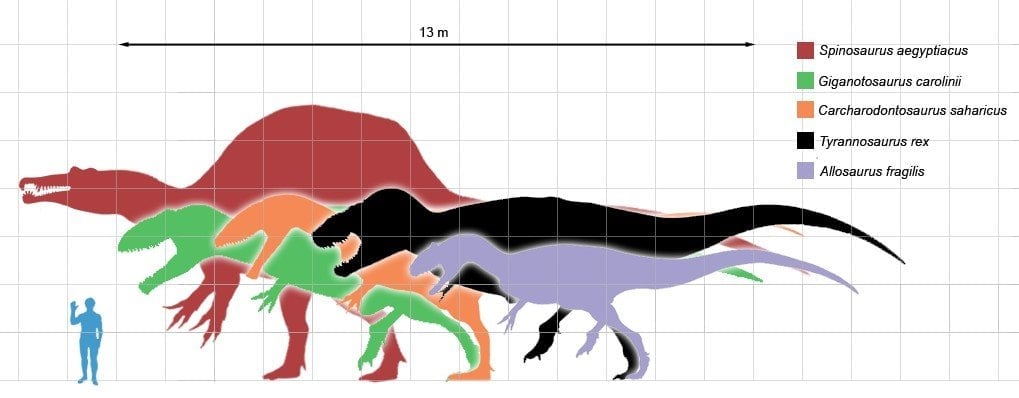
However, fossil studies suggest that T. rex had a heavier tail than the Giganotosaurus. The Giganotosaurus had a lean, pointed tail, which probably contributed to its agility and ability to make quick, sharp turns.
The anatomy of the Giganotosaurus has made it a better predator.
Guess the Giganotosaurus wins this round.
T. Rex 1 – Giganotosaurus 2
Jaw Power
While the speed and anatomy of the two dinosaurs are comparable, the jaw power of the T. rex was much greater. It could bite 8,000 pounds with a force of 35,586 N (8000 pounds of force), a force similar to the weight of three small cars or two medium-sized cars!
The not-as-immense jaw power of the Giganotosaurus kept it from crushing bones. This prevented it from eating other dinosaurs whole, which it could have easily done otherwise, given the size of its mouth.
This round goes to The T.rex.
T. Rex 2 – Giganotosaurus 2
Dental Structure
Another important factor for predators is the structure of their teeth. While the Giganotosaurus had almost all identical teeth, flat and wide, like blades, the T. rex had a set of teeth with a few different types. The front teeth were meant for gripping and pulling, the side teeth for tearing the flesh, and the back teeth for chewing the flesh.

Fundamentally, that’s a lot like the structure of our teeth. We use incisors to bite into our food, canines to tear through it, and back molars to chew. Of course, they ate other dinosaurs, while we ate their comparatively docile modern relatives (birds).
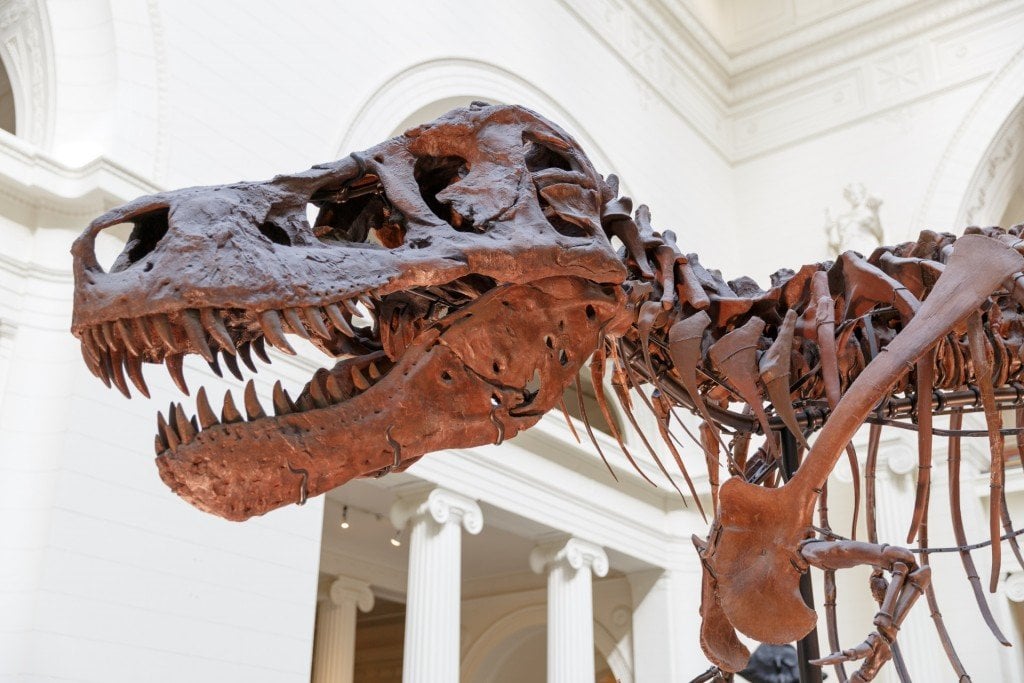
The T. rex has a far more developed dental structure than the Giganotosaurus, which seems right, as it had an extra 30 million years to evolve.
T. Rex 3 – Giganotosaurus 2
Intelligence
As mentioned earlier, both of these dinosaurs had huge skulls. The Giganotosaurus had a skull measured at 5.2 feet (1.6 m). However, the skull of the Giganotosaurus was big. The T. rex had one of the biggest skulls among dinosaurs. It is estimated that the T. rex had developed a more complex neural network. The T. rex was one of the smartest dinosaurs, giving this round to the T. rex.
T. Rex 4 – Giganotosaurus 2
Therefore, The Winner Is The Tyrannosaurus Rex!
Although the battle was close, The T. rex took this round. But in all honesty, These animals lived at such different times; we couldn’t predict what would have happened during a face-off.
One thing is for sure, though. I’m just glad that I live 60 million years after these beasts.
References (click to expand)
- The Tyrannosauridae. The University of California Museum of Paleontology
- Therrien, F., & Henderson, D. M. (2007, March 12). My theropod is bigger than yours … or not: estimating body size from skull length in theropods. Journal of Vertebrate Paleontology. Informa UK Limited.
- Campione, N. E., & Evans, D. C. (2020, September). The accuracy and precision of body mass estimation in non‐avian dinosaurs. Biological Reviews. Wiley.
- Prokosch, J., Bernitz, Z., Bernitz, H., Erni, B., & Altwegg, R. (2019, February 26). Are animals shrinking due to climate change? Temperature-mediated selection on body mass in mountain wagtails. Oecologia. Springer Science and Business Media LLC.
- Persons, W. S., IV, Currie, P. J., & Erickson, G. M. (2019, April 8). An Older and Exceptionally Large Adult Specimen of Tyrannosaurus rex . The Anatomical Record. Wiley.
- Alexander, R. M. (2006, April 3). Dinosaur biomechanics. Proceedings of the Royal Society B: Biological Sciences. The Royal Society.
- Hutchinson, J. R., Bates, K. T., Molnar, J., Allen, V., & Makovicky, P. J. (2014, May 5). Correction: A Computational Analysis of Limb and Body Dimensions in Tyrannosaurus rex with Implications for Locomotion, Ontogeny, and Growth. PLoS ONE. Public Library of Science (PLoS).
- Nesteruk, I. (2018, April 2). Tyrannosaurus Rex Running? Estimations of Efficiency, Speed and Acceleration. Innovative Biosystems and Bioengineering. Kyiv Politechnic Institute.
- Sellers, W. I., Pond, S. B., Brassey, C. A., Manning, P. L., & Bates, K. T. (2017, July 18). Investigating the running abilities ofTyrannosaurus rexusing stress-constrained multibody dynamic analysis. PeerJ. PeerJ.
- (2001) A new approach to evaluate the cursorial ability of the giant .... Interdisciplinary Centre for Mathematical and Computational Modelling
- Mazzetta *, G. V., Christiansen †, P., & Fariña, R. A. (2004, June). Giants and Bizarres: Body Size of Some Southern South American Cretaceous Dinosaurs. Historical Biology. Informa UK Limited.
- UWO research shows teenage T. rex had a powerful bite. The University of Wisconsin System
- Reolid, M., Cardenal, F. J., & Reolid, J. (2021, August 17). Digital 3D models of theropods for approaching body-mass distribution and volume. Journal of Iberian Geology. Springer Science and Business Media LLC.


